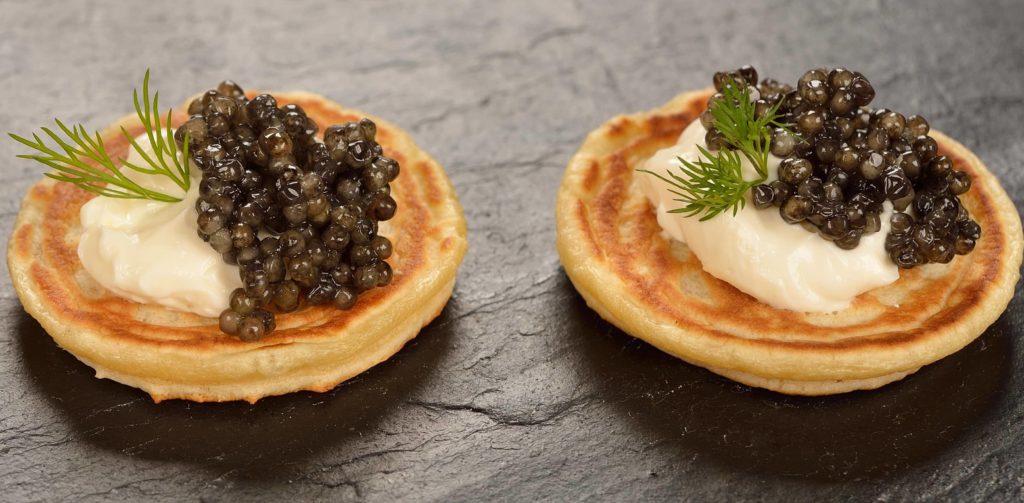
Despite the expanding usage of caviar in the culinary world, the same principles and serving methods must be followed when the time comes to eat Caviar. No matter if it is at a restaurant, corporate event, or a party, serving caviar properly requires the right conditions and tools when being served so that the product can be enjoyed at its full potential.
The majority of caviar comes from three types of sturgeon: Beluga, Sevruga, Baerii and Ossetra. The finest caviar should taste neither fishy nor overly salty. When buying, look for shiny, fine-grained egg globules that are sturdy and unbroken.
How to Serve Caviar?
Fine caviar should be served very cold in a non-metallic bowl nested inside a larger bowl filled with ice. Air and heat are the greatest threat to your caviar's quality. This is especially true for fresh Malossol caviar. Keep the container airtight and in the coldest part of the refrigerator until it is ready to serve, or else the flavor and texture can suffer. Caviar doesn't freeze until it's below -4 degrees, so you can store it in the coldest part of the fridge to get it as ice-cold as possible without it actually freezing, which can affect the texture of the eggs. Avoid metal bowls and utensils, which may impart a metallic taste to the caviar. Choose servers and utensils made of glass, wood, plastic or dish of pearl.
What to Serve with Caviar?
Fine caviar is best served simply, possibly alongside toast points or bland, unsalted crackers and salads. Crackers are a very common pairing for caviar. A plain cracker is often used so it doesn’t overpower the flavor of the caviar. Really, any low-salt, carb will go well with fine caviar. A warm, fresh piece of bread, baguette toast-point, or even unsalted potato or pita chips can serve as your caviar carb-base
Some people even like to eat it straight out of the tin the caviar came in to get the true, unadulterated taste of the fish eggs.
Although purists will disagree, believing nothing should interfere with the flavor of fine caviar, common accompaniments include lemon wedges, sour cream, crème fraiche, hard-cooked egg—yolks and whites chopped separately—and minced onion. Oftentimes, caviar is served on a small pancake known as a blini. Lesser-quality caviar products may well benefit from these garnishes. If you're new to caviar, start by tasting it without any accompaniments to get a true idea of the flavor.
When using different types of caviar, they should be served in the order of intensity of the taste, beginning with a milder-flavor, such as White Sturgeon and moving onto those that are more intense, such as Sevruga.
Don't chew the caviar, as you will lose a lot of the flavor. Use your tongue to feel the beads of fish eggs and taste the buttery fat.

